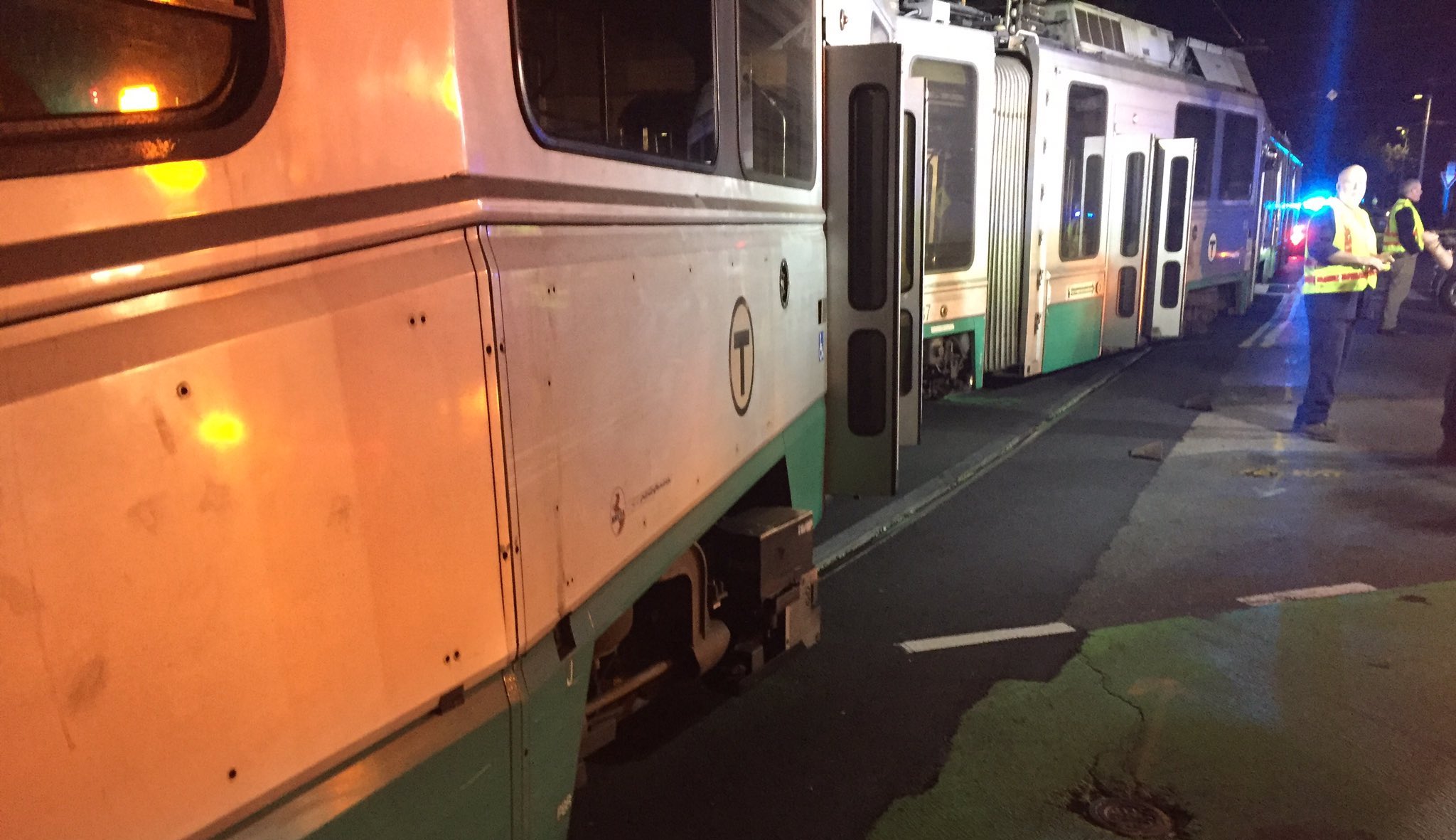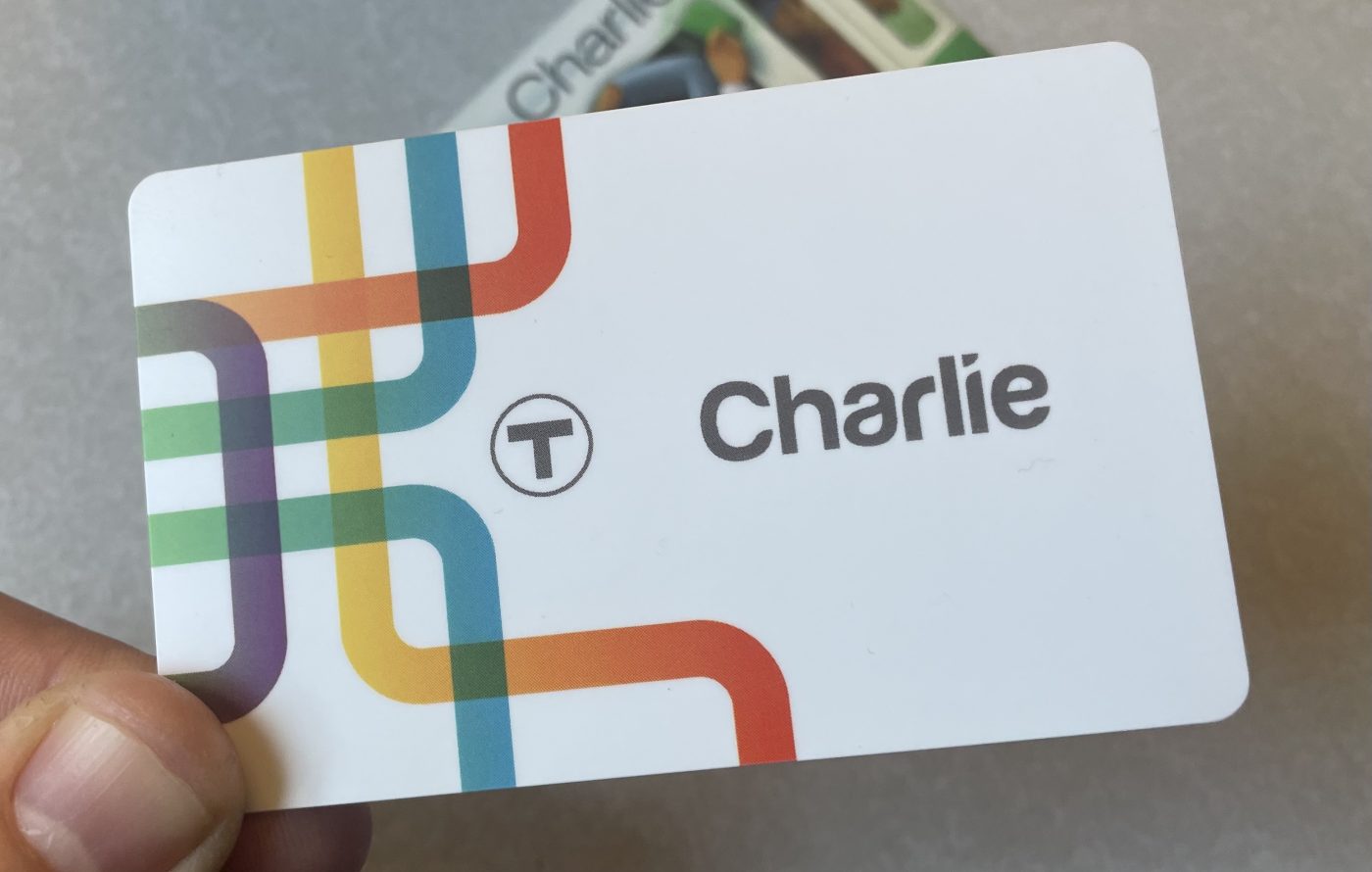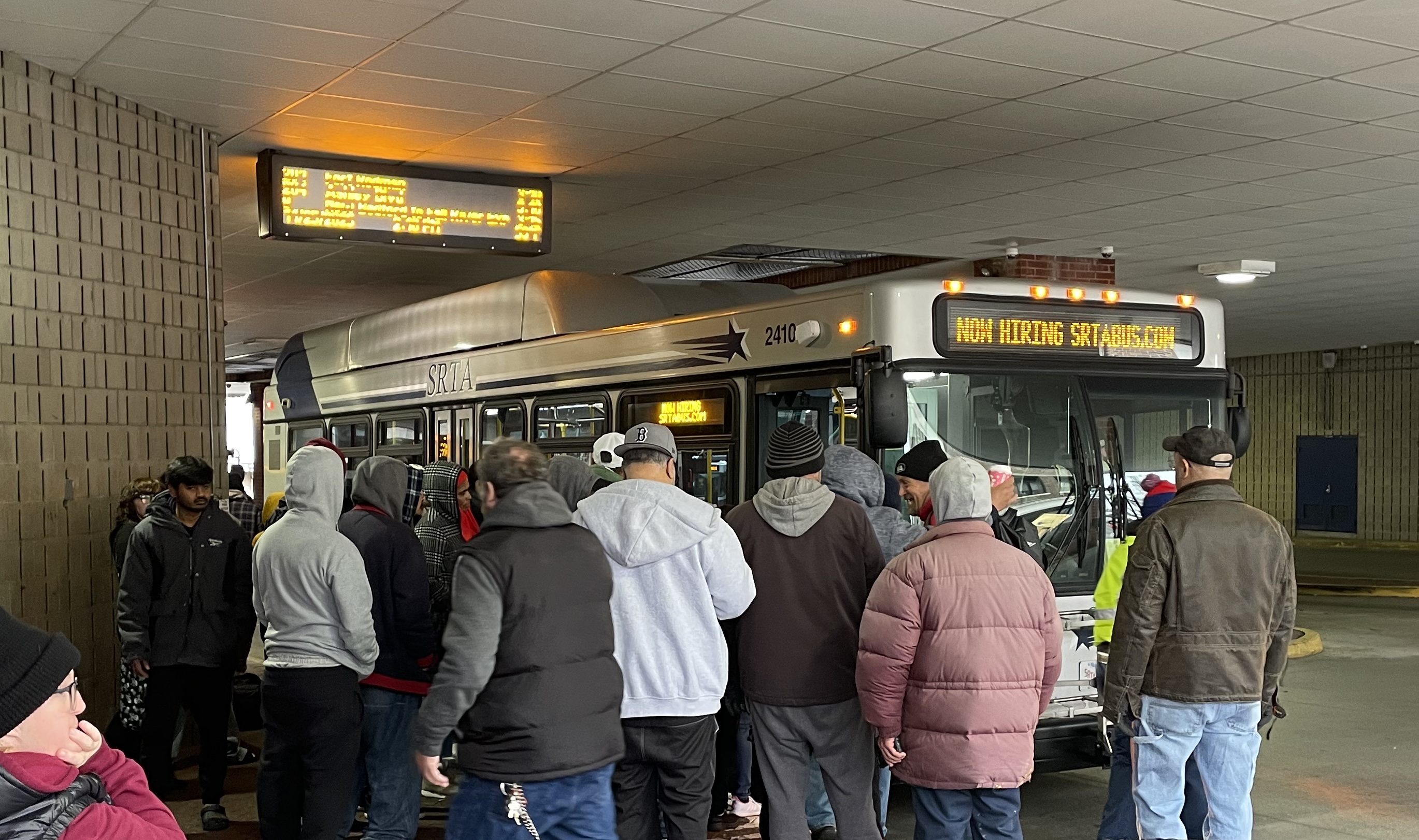Last week, a Green Line train on the E branch jumped off its rails near the Health Street station because a skateboard had been lodged in the tracks, which had been freshly replaced just a few weeks before.
Luckily, the incident happened in the evening, near the end of the line, so the disruption was relatively minor: crews pried the skateboard out, lifted the train back onto the track, and regular service resumed relatively quickly.
But the incident was just the latest indignity for the E branch, which includes the only segment of the MBTA's rapid transit system that shares its tracks with motor vehicle traffic, in the middle two lanes of Huntington and South Huntington Avenues in Boston's Mission Hill neighborhood.
That idiosyncrasy – an inheritance of the line's history as an early-20th-century streetcar line – causes multiple operational issues for the MBTA that can ripple throughout the rest of the bus and light rail network:
- There are no dedicated level-boarding platforms for Green Line riders, which means that these stops do not meet American with Disabilities Act (ADA) standards for accessibility, and passengers must board and disembark in the middle of a busy street.
- Trains frequently get stuck in traffic (or on the occasional skateboard). Even without traffic, the typical speed of trains between Health Street and Brigham Circle is under 6 mph; with traffic, an able-bodied pedestrian could beat the train at an easy walking pace.
- The lack of a dedicated right-of-way for transit on Huntington and South Huntington Avenues also delays two of the T's highest-ridership bus routes: the 66 (the 2nd-busiest bus route in the city, with 12,900 daily riders pre-pandemic) and the 39 (the 6th most-used bus route, with 11,600 daily riders). According to a 2016 analysis of bus delays on key routes, riders on those two routes collectively waste over 100 hours every weekday while they're stuck in traffic on Huntington Avenue west of Brigham Circle.
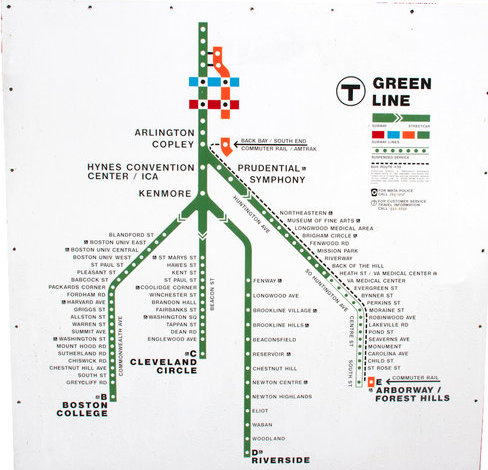
In the past, some T officials have intimated that it would be easier for the agency simply to walk away from these problems instead of fixing them: last year, when the T was examining service cuts in the depths of the pandemic, they had initially proposed pruning the street-running segment of the E branch.
Public outcry – including many reminders of the E Branch's “temporary” suspension of service to Forest Hills in the mid-1980s – and new federal pandemic relief legislation forestalled those cuts.
Over the past two summers, the T actually invested in refurbishing the E branch: crews shut down the middle lanes of traffic on Huntington Avenue between Heath Street and Brigham Circle to replace decades-old track this August (you can admire the project's freshly-laid asphalt in photos from last week's derailment).
Now, the T is beginning to prepare a longer-term plan to make this section of the line ADA-accessible with new, dedicated boarding platforms next to the tracks.
The project could also finally provide dedicated transit lanes for a notorious bottleneck along two of the city's busiest bus routes.
"The MBTA is in the preliminary design phase of the future E Branch corridor beyond Brigham Circle - the goal is to finish the design by 2025," an MBTA official told StreetsblogMASS in an email last week. "Several options are under consideration for the alignment of the Green Line tracks and the reconfiguration of Heath St. Station - one of these is a dedicated transit corridor along Huntington Ave. that would be used by both Green Line trains and buses."
The official also added that "the feasibility of these options is under evaluation, considering that South Huntington Ave. is too narrow to fully separate the tracks from the road and include platforms in the reservation."
Huntington Avenue between Riverway and Brigham Circle is about 60 feet wide from curb to curb. That's a few feet narrower than Columbus Avenue near Egleston Square, where the T and the City of Boston are currently building another center-running transitway with dedicated platforms.
South Huntington is narrower still (about 55 feet wide, with the same layout of four shared lanes for moving vehicles, plus two on-street parking lanes).
But transit advocates note that station platforms and a dedicated center-running transitway might be able to fit on Huntington and South Huntington if the new stations were sited in locations where there's room to expand the right-of-way onto adjacent parking lots or front lawns.
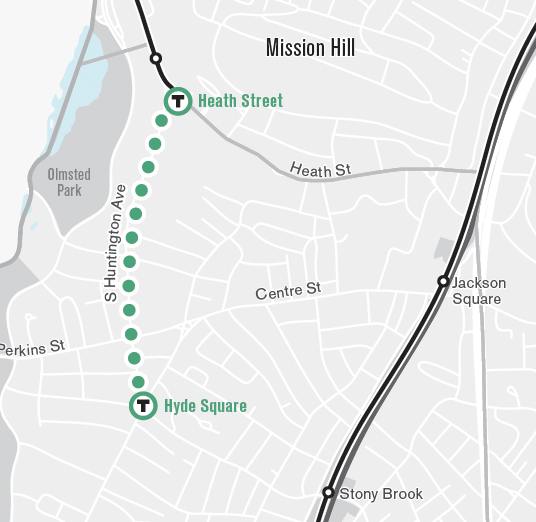
The idea of re-configuring South Huntington Avenue and its Green Line stops also resurrects another dormant concept for improving the E branch: extending the line another half mile to the south to Hyde Square in the Jamaica Plain neighborhood.
That concept – which is included in the city's GoBoston 2030 transportation plan – would potentially solve another looming problem on the E branch: the need to accommodate longer "Type 10" trains, which won't fit on the existing Heath Street loop.
The GoBoston 2030 plan, written in 2017, estimated that extending the E branch to Hyde Square would cost about $40 million for design and construction – considerably less than the T will spend to rehabilitate the Lechmere viaduct.
The E branch extension is also mentioned in the MBTA's own "Focus 40" long range plan, which says that "a Green Line extension of the E branch to Hyde Square in Jamaica Plain (would) better connect an environmental justice community with employment, health, and educational destinations" and adds that "dedicated right-of-way on Huntington Avenue for the E branch and the 39 and 66 bus routes between Brigham Circle and South Huntington Avenue would be a prerequisite to an extension."
Building a dedicated transitway along Huntington and South Huntington Avenues, and potentially extending the line to Hyde Square, would require close coordination from the City of Boston, which controls those streets.
But city officials say they're open to the idea, given how the majority of the people who travel along those streets do so while riding in MBTA buses and trains.
Boston City Councilor Kenzie Bok, whose district includes Mission Hill, told StreetsblogMASS that she's "very committed to finding a way to have safer, more accessible, more efficient service along that section of the E line to serve the many residents that live there, including a multiethnic senior community, so I’m looking forward to seeing the options the MBTA will present.”
A Boston Transportation Department (BTD) official noted that dedicated lanes for transit vehicles would not only improve mobility for transit users, but would also benefit emergency vehicles driving to the Longwood Medical Area.
The city "knows it is important to accommodate bikes and enhanced transit connections to improve service for those modes and meet our long-term transportation planning goals," wrote the BTD official in an email to StreetsblogMASS. "Our understanding is that conversations regarding improvements to the E Branch, particularly on the section where it is in mixed traffic on Huntington Ave and South Huntington Ave, are very preliminary and any improvement options will need to be vetted through the community and key stakeholders."
